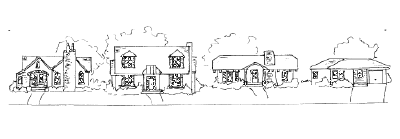|
HISTORY
Arlington Heights is a large
neighborhood beginning approximately three miles west of the
Fort Worth Central Business District. The area includes the smaller
subdivisions of North Hi Mount and Hillcrest.
The rolling hills of Arlington
Heights served as ranch land until 1890 when W. T. Ladd established
a dairy farm. In 1893, Ladd's east fence marked the western limits
of the Fort Worth residential district. His west fence was at
the present day Sanguinett St. Ladd leased this land from an
English syndicate who eventually offered to sell him the land
for $100 per acre. Being unable to buy the land, Ladd eventually
opened a furniture store.
One of the eleven original grantees
of land in Arlington Heights in 1857 was J. P. Montgomery. Montgomery
sold his land near Montgomery Street to F.M. Hammond in 1919.
Residential development in parts of Arlington Heights began in
1890. Developers were D.O. Modlin, George C. Clarke, Lewis D.
Fox and the Chamberlin Investment Company. The most desirable
lots sold for $300, however, as development spread to the south
and southwest, one discouraged owner traded his lot for a typewriter
and another traded his for a set of tires. In 1892, Ye Arlington
Inn was erected at the present corner of Merrick and Crestline.
The inn burned down in 1894 and was not rebuilt. Twenty years
after development began only a handful of homes had been built.
Initial advertisements for the
lots attracted buyers with phrases such as "aristocratic
and most desirable section, cool breezes, splendid views and
pure water," and "All who purchase now are sure to
make money." Around this time 3,000 trees were transplanted
into the neighborhood from the Trinity River valley.
In 1916 the U.S. Army came to
Fort Worth looking for a site to build a camp. Robert McCart,
who had bought land when the initial Arlington Heights developers
were in financial trouble, donated 1,000 lots to the army. The
1,410 acre site was named for Texas revolutionary hero James
Bowie, and served as a training ground for the 36th Division
of the Texas-Oklahoma National Guard. There were 1,500 buildings
at Camp Bowie and most buildings and tents had electric lights.
There were also water, sewer and telephone systems. Infantry
Brigade commander Major General John A. Hulen reorganized the
36th Division, and after his retirement, he settled in Ryan Place,
where he lived until his death in 1957.
After WWI, residential development
turned west. Between 1920 and 1926, Arlington Heights became
the fastest growing section of Fort Worth, and was annexed by
the city in 1922.
Present day Camp Bowie Blvd.
was originally called Arlington Heights Blvd. and was paved with
creosote soaked wooden blocks. In 1921 it was renamed Camp Bowie
Blvd., and was paved with brick in 1928. Camp Bowie Blvd. was
designated an historical site by the Texas Historical Commission
in 1978.
|

